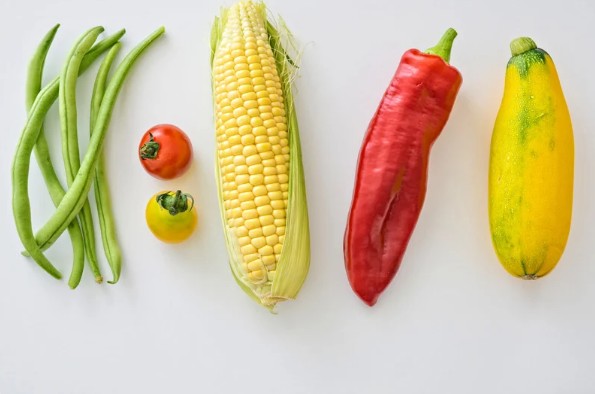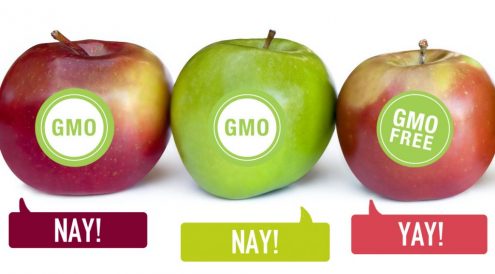
In this article we are going to discuss how to green your food. By paying attention to the methods that are used to produce and transport the food that you buy, you can improve your health and benefit the environment.
Table of Contents
Buy Local
Most food travels an average of 1,500 miles by plane or truck before it reaches your table—a lengthy voyage that diminishes food quality and contributes to air pollution. You can enjoy fresher food and help reduce pollution by buying locally produced food, which typically requires less fuel and packaging.
Locally produced food may also be less expensive than long-distance alternatives due to the lower refrigeration and shipping costs that local producers incur.
How to Find Locally Produced Food
- Local grocers and co-ops: Major food retailers, such as Safeway and Wal-Mart, typically source all of their produce and other food products from a few far-flung regional distributors. In contrast, independent grocers and co-ops tend to stock locally produced food. Consult the phone book or search online to find independent grocers or co-op markets in your area.
- Farmers‘ markets: Farmers’ markets are markets—usually set up outdoors along a regular schedule—where local farmers, artisans, and other merchants sell their goods to the public. To find markets near you, check www.farmersmarket.com.
- Whole Foods and Wild Oats: Whole Foods (www.wholefoods.com) and Wild Oats (www.wildoats.com) are the leading environmentally conscious grocery store chains. Both chains typically stock a large selection of locally sourced produce and other products. Check their websites to find Whole Foods or Wild Oats stores near you.
Buy Organic Foods

Organic food is produced without chemical fertilizers, pesticides, herbicides, or other unnatural methods, such as using growth hormones to plump up livestock.
A cleaner production process results in healthier food and also inflicts less damage on soil, water, air, and wildlife. By buying organic food, you’re also helping to support organic farmers, who typically place a higher priority on land conservation and renewable resources than conventional farmers and industrial farming conglomerates.
How to Tell Whether Food Is Organic

Food that’s marked “all-natural” or “Earth – friendly” is not necessarily organic, and not all food marked “organic” is produced according to the same standards. Look for food that’s marked “Certified Organic” on its nutritional label and that bears the USDA’s green organic seal.
These markings indicate that the food has been certified organic by a USDA-accredited certifying agent and meets the standards of the USDA’s National Organic Program (NOP).
Where to Find Organic Food
The best place to find Certified Organic foods is at a local grocer or co-op, a farmer’s market, or a store such as Whole Foods or Wild Oats.
Buy Seasonal Foods
Produce that’s in season doesn’t need to be flown in from overseas or trucked in from afar, so it’s generally much less expensive and harmful to the environment than out-of- season produce. It also tends to have less packaging since it’s not shipped over vast distances.
Buy Fair Trade Foods
In addition to enforcing fair labor practices, the fair trade program requires participants to follow stringent environmental policies that curb erosion, water abuse, synthetic chemical use, and more. Products that bear the Fair Trade Certified™ logo, including coffee, tea, rice, fruit, and more, are available at food stores and other retail outlets nationwide.
For a complete list of Fair Trade Certified products and information on where to buy them, see the website of TransFair USA (fairtradecertified.org), the only third-party certifier of Fair Trade products in the United States.
Buy in Bulk
If you buy a particular food or food-related product routinely, consider contacting the manufacturer to buy the product in bulk. Though some manufacturers sell wholesale only to retailers, many sell to consumers in bulk through their websites or through other online retailers.
You can also buy in bulk from major wholesale-retail stores, such as Costco, BJ’s, and Sam’s Club. Buying in bulk has several benefits:
- Less packaging: Manufacturers often use less packaging to pack bulk orders than to pack single items.
- Fewer trips: If you have bulk supplies of staples such as paper towels and detergent on hand, you can visit the grocery store less often, which saves gas, grocery bags, and time.
- Less expense: Buying in bulk is almost always cheaper than buying single items.
Avoid or Cut Down on Meat in Your Diet
Depending on your preferences, you may want to consider reducing or eliminating your meat consumption. Simply put, meat puts a greater strain on the environment than other foods because producing it requires far more resources.
For example, producing a single pound of grain-fed beef requires 2,700 gallons of water, as well as grain, land, hormones, and other chemicals. In contrast, growing a pound of organic tomatoes takes just 21 gallons of water and few other resources.
Buying organically produced meat helps somewhat, but the production process is still demanding on the environment. If you’re interested in making the switch to vegetarianism or veganism, see the website of the Vegetarian Resource Group (www.vrg.org) or order a free vegetarian starter kit from PETA at how-to-go-vegan.peta.org.


